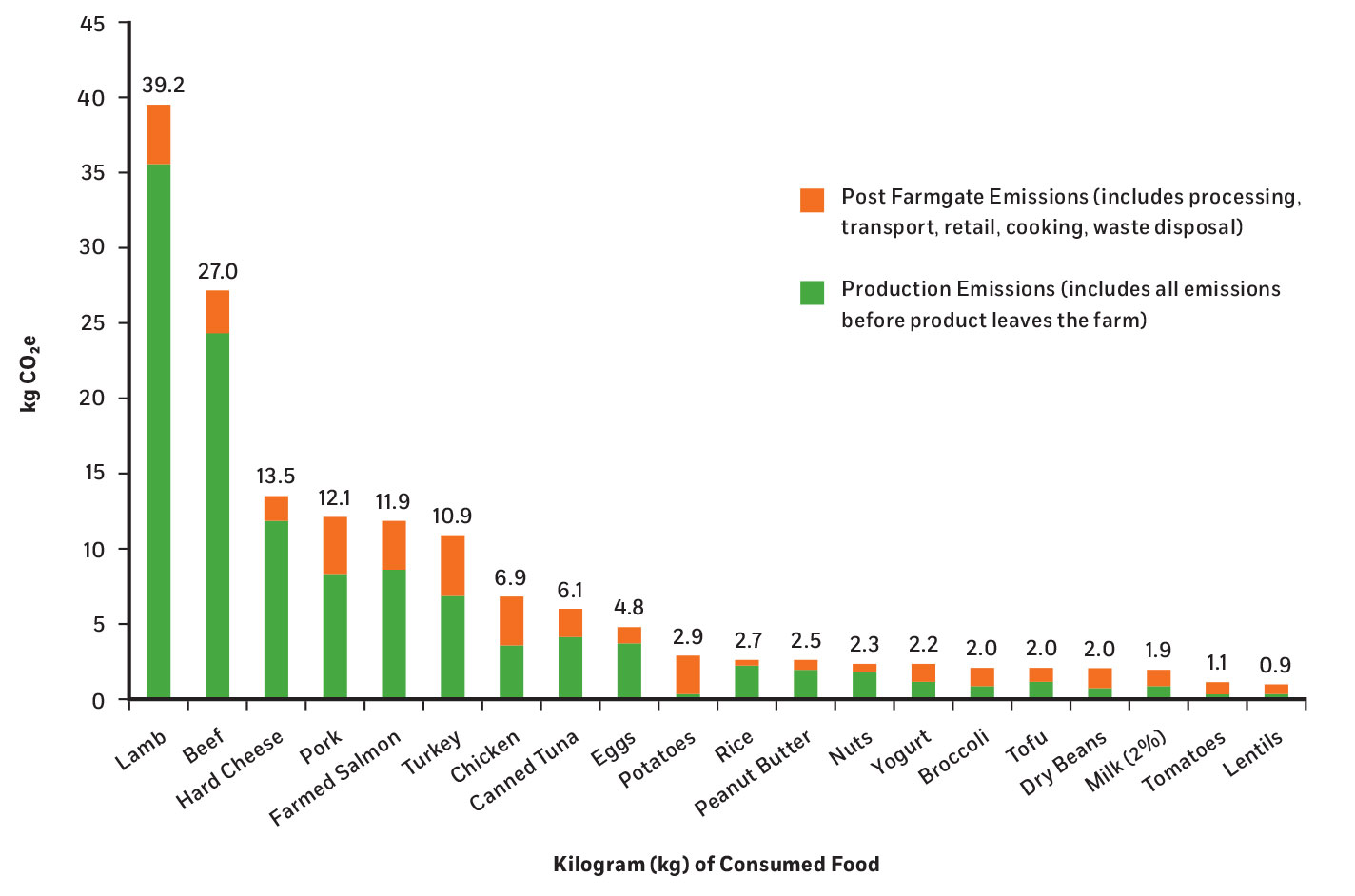
Three-Color Hummus with Garlic–Whole Wheat Pita Chips (page 106)
Quinoa Tabbouleh (page 68)
Baked Falafel Pitas with Chopped Greek Salad and Roasted Cashew Sauce (page 146)
Sesame, Orange, and Hazelnut Cookies (page 193)
Mixed Chicory Salad with Avocado, Garlic Croutons, and Pine Nuts (page 56)
Pasta with Creamy Mushroom Sauce (page 127)
Rainbow Chard with Dried Apricots and Pine Nuts (page 177)
Ginger, Molasses, Raisin, and Almond Biscotti (page 196)
Red Leaf, Orange, and Jicama Salad with a Citrus-Soy Vinaigrette (page 55)
Thai Coconut Soup (page 88)
Teriyaki Tofu Broccolette on Wild Rice (page 133)
Brown Rice Pudding (page 206)
Colorful Garden Cobb Salad with Creamy Avocado Dressing (page 58)
Butternut Squash, Black Bean, and Kale Tamales with Spicy Tomatillo Salsa (page 158)
Banana-Coconut Cake (page 203)
Raspberry Salad with Baby Greens and Raspberry–Golden Balsamic Vinaigrette (page 50)
Hearty Beet Soup (page 87)
Seared Polenta with Spicy Heirloom Tomato Sauce (page 123)
Double Chocolate–Coconut Ice Cream (page 212)
Baked Sweet Potato Fries with Creamy Ranch Dip (page 173)
Cabbage and Carrot Crunch Salad (page 63)
Crispy Baked Kale Chips (page 109)
Camille and Marea’s Favorite Popcorn (page 114)
Chipotle-Lime Brazil Nuts (page 113)
Four Bean and Sweet Potato Chili with Skillet Corn Bread (page 142)
Coconut, Almond, and Raspberry Jam Thumbprint Cookies (page 195)
Grilled Hearts of Palm Salad with Grapefruit and Avocado (page 48)
Plantain Tacos with Pureed Black Beans and Mango-Lime Salsa (page 155)
Creamy Coconut Ice Cream (or banana variation; page 209)
Tropical Green Smoothie (page 40)
Spicy Cucumber-Ginger Gazpacho (page 89)
Healthy Greens with Carrot and Parsley (page 65)
Grilled Summer Vegetables and Tofu on Sweet Corn and Farro (page 136)
Pomegranate-Roasted Pears (page 205)
Sweet Simmered Cinnamon-Orange Tofu and Brown Rice (page 30; 13 g protein, 400 calories)
Peanut Butter–Banana Smoothie (page 41; 17 g protein, 370 calories)
Colorful Garden Cobb Salad with Creamy Avocado Dressing (page 58; 18 g protein, 620 calories)
Curried Yellow Split Pea Soup (page 82; 23 g protein, 430 calories)
Grilled Summer Vegetables and Tofu on Sweet Corn and Farro (page 136; 22 g protein, 540 calories)
Blueberry Cornmeal Pancakes, 3 pancakes (page 27; 710 calories, 15 g protein)
Spinach Salad with Maple-Roasted Butternut Squash and Walnuts (page 54)
Barley, Quinoa, and Cannellini Bean Loaf (page 148)
Country Mashed Potatoes with Mushroom Gravy (page 169)
Acorn Squash with Crispy Maple Pumpkin Seeds (page 175)
Garlicky Brussels Sprouts and Carrots (page 181)
Apple and Pear Maple Crisp (page 192)
Creamy Coconut Ice Cream (page 209)
Baked Sweet Potato Fries with Creamy Ranch Dip (page 173)
Eccentric Caesar Salad (page 61)
Seared Polenta Cakes with Spicy Heirloom Tomato Sauce (page 123)
Very Chocolaty Chocolate Brownies (page 200)
INGREDIENT |
APPROXIMATE YIELD |
Bell pepper (medium), diced |
11/2 cups/170 g |
Carrot (large), thinly sliced |
3/4 cup/90 g |
Carrot (medium), coarsely grated |
1/2 cup/50 g |
Celery, 1 (large) stalk, thinly sliced |
1/3 cup/40 g |
Cucumber (large), diced |
2 cups/270 g |
Leek (large), white part only, thinly sliced |
1/2 cup/50 g |
Red onion (medium), diced |
11/2 cups/150 g |
Yellow onion (small), diced |
1 cup/100 g |
Yellow onion (medium), diced |
11/2 cups/150 g |
Yellow onion (large), diced |
2 cups/200 g |
Parsnip (medium), diced |
3/4 cup/100 g |
Tomato (large), diced |
11/4 cups/210 g |
Zucchini (medium), diced |
1 cup/130 g |
CUTTING METHODS |
Large dice Large cubes measuring about 3/4 in/2 cm on all sides |
Medium dice Medium cubes measuring about 1/2 in/12 mm on all sides |
Small dice Tiny cubes measuring about 1/4 in/6 mm on all sides |
Fine dice Very tiny cubes measuring about 1/8 in/3 mm or smaller on all sides |
Mince Very, very tiny cubes, measuring about 1/16 in/22 mm or smaller on all sides |
Thinly sliced Pieces about 1/4 in/6 mm thick |
Julienne Usually 1/8 by 1/8 in/3 by 3 mm and 1 to 2 in/2.5 to 5 cm long |
Coarsely chopped Pieces roughly the size of a medium dice |
Finely chopped Pieces roughly the size of a small dice |

SOURCE: THE ENVIRONMENTAL WORKING GROUP
The chart above shows the life cycle total of greenhouse gas emissions for common protein foods and vegetables, expressed as kilograms (kg) of carbon dioxide equivalents (CO2e) per kg of consumed product.
Lamb, beef, and cheese have the highest emissions. This is true, in part, because they come from ruminant animals that constantly generate methane through their digestive process, called enteric fermentation. Methane (CH4)—a greenhouse gas twenty-five times more potent than carbon dioxide (CO2)—accounts for nearly half the emissions generated in this study’s Nebraska beef production model (see chart). Pound for pound, ruminant animals also require significantly more energy-intensive feed and generate more manure than pork or chicken (see figure).
Lamb has the greatest impact, generating 86.4 lb/39.2 kg of carbon dioxide equivalents (CO2e) for each kg eaten—about 50 percent more than beef. While beef and lamb generate comparable amounts of methane and require similar quantities of feed, lamb generates more emissions per kg in part because it produces less edible meat relative to the sheep’s live weight. Since just 1 percent of the meat consumed by Americans is lamb, however, it contributes very little to overall U.S. greenhouse gas emissions.
Beef has the second-highest emissions, generating 59.6 lb/27.0 kg of CO2e per kg consumed. That’s more than twice the emissions of pork, nearly four times that of chicken, and more than thirteen times that of vegetable proteins such as beans, lentils, and tofu. About 30 percent of the meat consumed in America is beef.
Cheese generates the third-highest emissions, 29.7 lb/13.5 kg of CO2e per kg eaten, so vegetarians who eat a lot of dairy aren’t off the hook. Less-dense cheese (such as cottage) results in fewer greenhouse gases since it takes less milk to produce it.
Copyright © Environmental Working Group, www.ewg.org. Reprinted with permission.